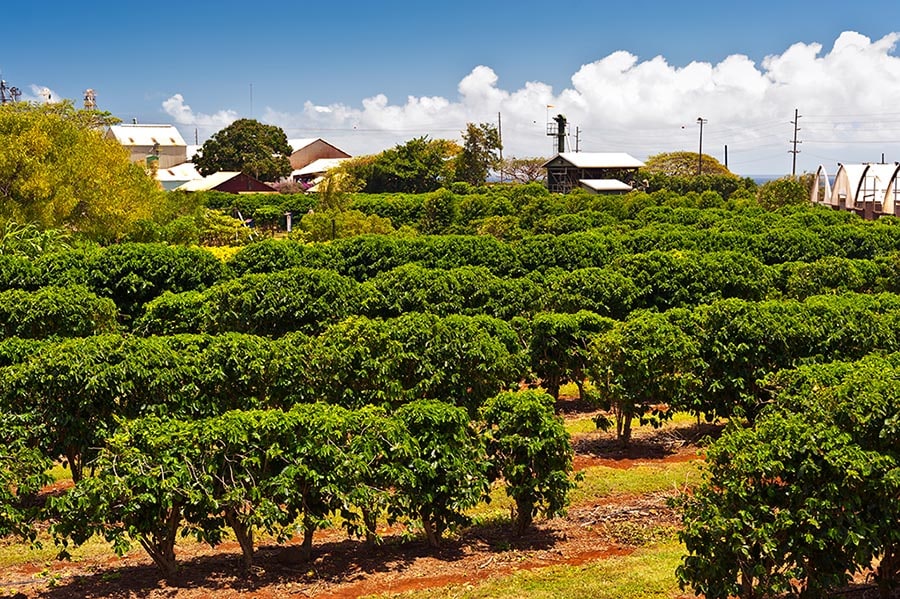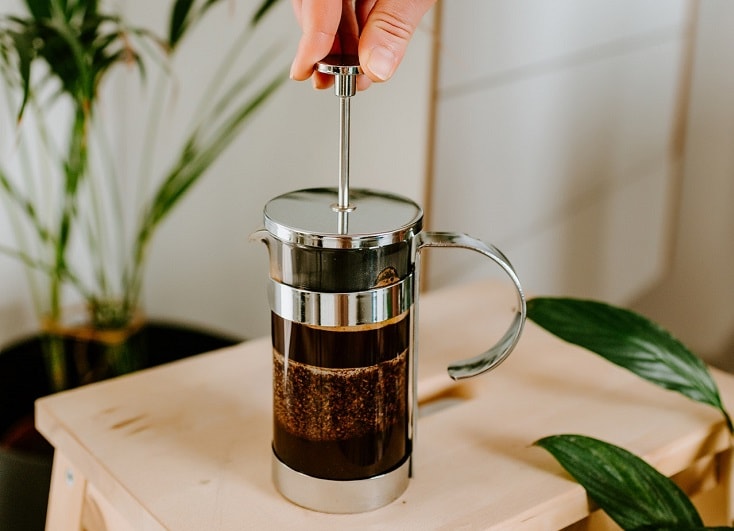
Molokai coffee is a very specific kind of coffee grown on Moloka’i in Maui County, Hawaii. Much like Champagne, Bourbon, and Kona coffee, Molokai coffee can only be grown on Molokai and must uphold specific, legally defined quality standards. As a result of the strict geographical and legal requirements needed for coffee to be considered Molokai coffee, it is a sought-after variety among specialty coffee enthusiasts and is usually considered a luxury coffee.
In this guide, we’ll explain what requirements coffee must meet to be legally considered Molokai coffee. We’ll also cover how to purchase Molokai coffee, the best ways to prepare it, and what alternatives are available if you can’t stomach the steep prices.

The Basics of Molokai Coffee
The island of Moloka’i in Maui County, Hawaii, is the only place on earth where Molokai coffee can be grown. Any coffee that attempts to mimic the qualities of Molokai coffee must be clearly labeled as “Molokai-style coffee” or a similarly clear indication that it is not genuine Molokai coffee grown in Hawaii.
A special designation called “Molokai Prime” applies to green coffee beans that meet a set of strict requirements delineated in Hawaiian law. To be considered Molokai Prime, coffee grown in Moloka’i must be clean and free from moldy, fermented, medicinal, and sour aromas and flavors when brewed. Molokai Prime coffee must contain between 9% and 12% moisture by weight and cannot have more than 20% defective beans, also by weight.
Such strict requirements are limiting and make it difficult for coffee to get the coveted Molokai Prime designation, but also gives customers confidence in knowing that they’re getting high-quality coffee when they purchase Molokai Prime beans.
Currently, only the company “Coffees of Hawaii” produces Molokai coffee. Their 500-acre farm produces 100% percent of the world’s Molokai coffee supply. When you combine the high demand from coffee enthusiasts with the relatively small global supply, the extravagant prices Molokai coffee fetches are more understandable. It is common to see Molokai coffee selling for between $40 and $50 per pound.

Tips for Purchasing Molokai Coffee
Even though Coffees of Hawaii is the only producer of Molokai coffee, they sell their beans to several companies that roast and sell the coffee to consumers. When shopping for Molokai coffee, it is important to read the label carefully to ensure you’re getting 100% Molokai coffee subject to legal quality checks. Always make sure that the label says 100% Molokai coffee and not simply Molokai coffee or Molokai-style coffee.
Many people prefer dark roast Molokai coffee, so don’t be scared away by a darker roast profile, even if you usually prefer medium and light roasts. Ultimately, which roast level you prefer for Molokai coffee comes down to personal taste, and the only way to know for sure what you like is to sample a variety of different roast levels.
Brewing Molokai Coffee
Just like choosing a roast, picking a method to brew Molokai coffee is a matter of taste. We recommend sticking with your favorite brewing method at first to establish a baseline and ease comparison between Molokai coffee and other coffees you’ve tried. However, many people swear by brewing Molokai coffee in a French press or other immersion-style brewers. Molokai coffee naturally has chocolatey, nutty, and earthy-tasting notes, making it well-suited for immersion brewing.

Alternatives to Molokai Coffee
It is impossible to write a guide to Molokai coffee without mentioning the other luxury Hawaiian coffee, Kona. Just like Molokai coffee, Kona coffee can only be grown in a specific geographic location in Hawaii. Also, like Molokai coffee, Kona coffee can be exorbitantly expensive, making it difficult for some people to justify purchasing.
However, some Kona coffee is more affordable than others, so it is usually a bit easier to find more affordable Kona than it is to find affordable Molokai. We recommend looking for cheaper Kona coffee if you want to try Hawaiian coffee but can’t stomach the prices of Molokai coffee. Be aware that the label must say 100% Kona and not Kona-style coffee for it to be genuine Kona coffee.

Final Thoughts
Molokai coffee is less well-known than Kona but can be just as good. If you don’t mind forking over $40 to $50 per pound for a bag of Molokai coffee, you’ll enjoy a smooth, chocolatey coffee free from defective beans and odd flavors. Hawaiian law regulates Molokai coffee, making it one of the most consistent coffee varieties you can buy. If you have some spare cash to spend on coffee and love sampling new origins, you won’t be disappointed by Molokai coffee.
Featured Image Credit: Unsplash















